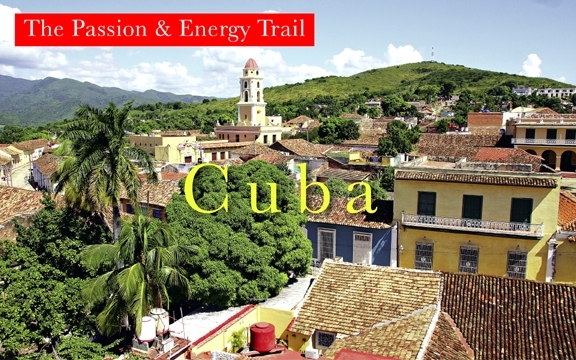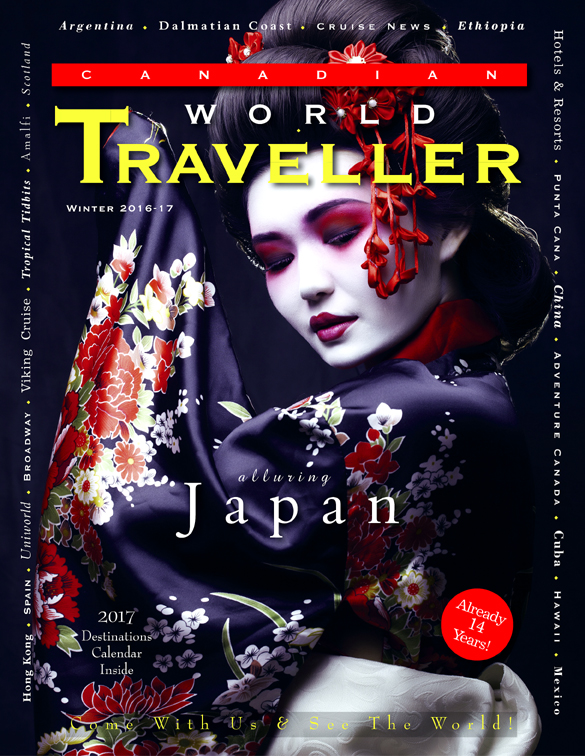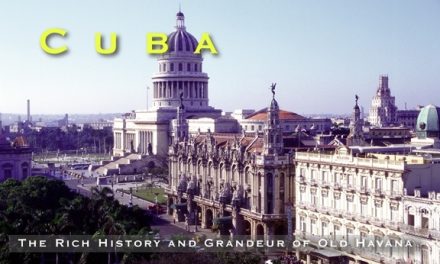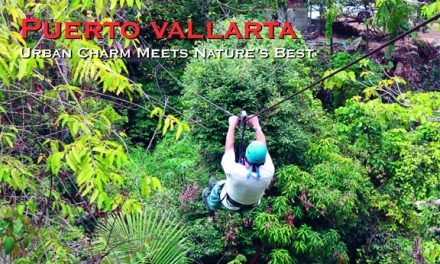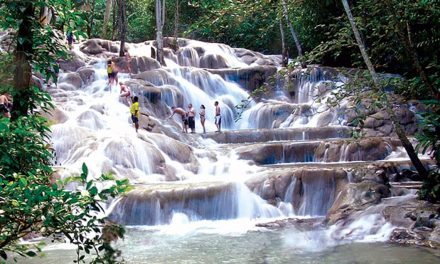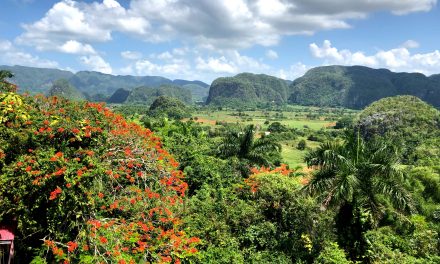Cuba
The Passion & Energy Trail
Article & Photography by Steve Gillick

‘Cienfuegos Passion’ seemed to be an apt description of the city founded by Don José Cienfuegos at the turn of the century. But in this case, the ‘passion’ referred to the name of the welcome drink concocted by the staff at Club Cienfuegos on our first day in Eastern Cuba. Fresh pineapple juice, coconut liqueur, rum, curacao and grenadine provided a refreshing and sweet way to recuperate from our early morning flight to Santa Clara. The Zarzuela de Mariscos, a delicious seafood stew of lobster, shrimp and fish followed.
And this being Cuba, where music plays such a major role in the history and culture of the people, we were serenaded by a trio of guitar players from the group Fuego de Cuba (Cuban Fire). The song Luna Sureña, Southern Moon, dreamily made reference to the fact that “The moon from Cienfuegos that shines on the Bay at night is different from all other moons…”
Where on earth could one experience such a fulfilling introduction that caters to all the senses while at the same time conveying the message that we were in for something very special in Eastern Cuba?
Cienfuegos, literally ‘one hundred fires’ earned a UNESCO World Heritage designation for its city core of 19th century Spanish architecture. And we were fortunate to stay, literally steps away, at the Hotel La Union, a colonial building dating to 1869.
Like much of Eastern Cuba, serendipity lies around every corner and just down the road.
The Cienfuegos Botanical Garden is a mecca for nature lovers, gardeners and birders. Our guide Roger Echeverria showed us some of the bounties that included Bamboo, Ficus, 216 types of Palm Trees, as well as the Great Lizard Cuckoo, one of the 76 species of birds that can be found in the area. The visit was a pleasant departure from city tours and beaches and really emphasized Cuba’s diverse ‘special interest’ offerings.
Trinidad is only two hours away and the drive reveals small towns and fields of pineapple and banana. The city is one of the originals in Cuba, founded by Diego Velázquez in 1514, and it remains one of the best preserved colonial towns anywhere. The narrow cobblestone streets are lined with colourful, small private homes as well as restaurants, art galleries, craft shops and souvenir stores. Inevitably visitors wander past the harmonies of street musicians or a woman busily weaving Panama hats on a street corner, as they head toward historic Plaza Mayor and on to the viewing tower at Palacio Cantero for spectacular vistas of the city surrounded by the Escambray Mountains.
After a sampling of Canchanchara (a drink of rum, honey and lemon juice) a visit to the village of Manaca Iznaga in Sugar Valley affords great views of the countryside and mountains from the 184-step tower while below, the cloth market hums with activity.
Travelling in Eastern Cuba can truly be a test of patience. The main highway is fairly easy to travel but when that ends, the secondary roads may be very slow going with uneven pavement, pot holes and the need to slow down if stuck behind the local transportation: horse carriages and ox carts. But it’s all part of a unique experience.
Camaguey, another of the towns founded in 1514, and known as the City of Churches, lies five hours drive to the East of Cienfuegos. On our arrival we spoiled our taste buds at the Caminos de Hierro hotel with the white bean and chorizo soup, and the amazing Camagueyan-style chicken with beer sauce, plantain, bacon and fresh vegetables. Then as spirited voices and guitars entertained us, two of the customers started to dance a slithery salsa. It was like a Hollywood movie and a great preview of the city’s vibrant artistic and culinary life.
In fact we were just around the corner from Cinema Street where the cafés and bars, such as the Cafeteria La Dolce Vita, reflect some aspect of cinematic history. Interspersed amongst the restaurant and stores are numerous art galleries and workshops. And when you add in the Contemporary Ballet just down the street, the Plaza del Carmen-the historic town square, a city tour by Bixi-taxi (bicycle taxis with knowledgeable, English speaking drivers), and leisurely walks through the streets of colourful, colonnaded colonial buildings, you quickly realize that Camaguey is one amazing city.
But not to be outdone is Santiago de Cuba, another 5 hours drive to the east. A stop in Bayamo on the way reveals the exact spot where Perucho Figueredo, the musician, poet and freedom fighter wrote the words of the Cuban National Anthem on October 20, 1868, including the call to action, “To die for the homeland is to live”.
The theme of fighting for freedom is evident throughout the city of Santiago. Plaza de la Revolución features a giant statue of city hero Antonio Maceo on his horse, gesturing for Cubans to join the fight for independence from Spain, while close by, twenty-three raised machetes symbolize March 23, 1878 when the fight for independence was intensified. And not far away, on July 26, 1953, Fidel and Raoul Castro led a group of 135 to attack the Moncada Barracks as a warning that the Batista government’s days were numbered.
In the spirit of honouring Cuban heroes, the Mausoleum to José Marti in Santa Ifigenia Cemetery pays tribute to the hero of the War of Independence from Spain. A short but impressive changing of the guard ceremony takes place every 30 minutes. Not far away, is the tomb of Emilio Bacardi of the eponymous Rum family, as well as the tomb of Compay Segundo, generally acknowledged as the spirit behind the music of the Buena Vista Social Club. His tombstone includes the inscription “Las Flores de la Vida”—‘Flowers of Life’, that refer to the songs he left the world.
As the birthplace of Cuban music, visitors to Santiago can participate in the hypnotic Afro-Cuban drumming and dancing of the group Tumba Francesca and then head to the Casa de Trova in the evening to hear exciting traditional Cuban music and watch energetic and smiling dancers perform to contagious salsa and rhumba rhythms.
Of course Cuba is famous for its beaches. At Hotel Playa Pesquero in Holguin, about 2 ½ hours from Santiago, the relaxing calm of white sand and great food beckons, but still, if the call to further explore is strong, then a day trip to Gibara, known for its fresh seafood is in order. The small town is easily walkable: Go through the town square with its Statue of Liberty, past the cigar factory, to the dock where catamaran trips provide photo opportunities of the Bay, the local fisherman and the colourful buildings of the town.
Eastern Cuba is a dynamic destination that caters to all the senses, all travel styles and many special interests: food, nature, architecture, art, culture, music, history, local interaction and more. It’s a great excuse to leave the all-inclusive routine for one– or a few days– and follow the trail of passion and energy to the East.
www.gocuba.ca
Click on cover to view published article

